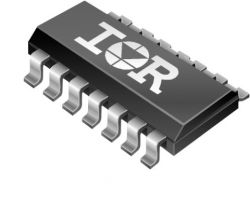DS = 100V, V GS = 0V V DS = 80V, V GS = 0V, T J = 125°C MOSFET symbol showing the V DS =50V Conditions V GS = 10V V GS = 0V V DS = 50V ƒ = 100 kHz, See Fig. 5 V GS = 0V, V DS = 0V to 80V, See Fig. 11 V GS = 0V, V DS = 0V to 80V Conditions V DS = 50V, I D = 180A I D = 180A V GS = 20V V GS = -20V. MOSFET N-CH 100V 100A TO263-3 IPB042N10N3G. Business seller information. Contact details. Value Added Tax Number: GB 318 5639 39. After receiving the item, contact seller within. Refund will be given as. Return shipping. Buyer pays for return shipping.
Hi, I was wondering if anyone knew of a resource or site that can tell you what size heat sink and/or cooling fan solution will be needed if the mosfet driver below is used near 100V and 100A (~10 kW)


I’m wondering if this can be used as an H-bridge to control 2 DC brushed motors,
i.e. 1 motor for forward/reverse, 1 motor for left/right on a lets say hobby level car.
or other applications where high current or voltage loads may be necessary.
i.e. like this EV car below.

From the little research I’ve done, I haven’t really found a low cost solution
for driving brushless DC motors with low cost brushless drivers.
This is with respect to large loads for motors such as this:
Mosfet 100v 50a

N Channel Mosfet 100v 100a
Is there a way to drive these with Mosfets and the driver mentioned above without using the controls offered in the 2nd link? Some of the motors in the link above are running beyond 100A would it be just a matter of finding a Mosfet with a larger current rating i.e. on Digikey?
Mosfet Irf 100v 100a

100v 100a Mosfet
I’ve seen ESC drivers for quadcopter brushless motors and RC cars but are they controllable via an Arduino? Do I just send them PWM signals to run them?
